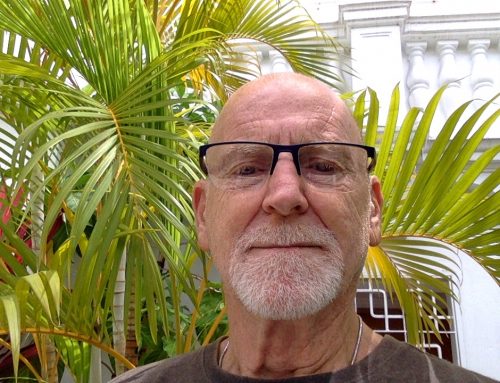EMDR: For People With PTSD
So often one of the first questions I am asked when people learn that I am therapist specializing in trauma work is “What is trauma and how do you really know you have PTSD?” So let me first start by explaining these terms, as they are too often misunderstood, with assumptions made which sometimes include minimization of someone’s experience.
Trauma is any experience that impacts your life negatively. It can occur in response to an incident that happened once or is on-going. Many people assume that the only thing that causes PTSD or trauma is going to war. While combat is definitely a known cause of trauma, experiences such as physical, sexual, and emotional abuse, moving, divorce, illness, grief and loss for example can cause trauma too. It can occur after experiencing an accident. Any event that threatened your life or the lives of those around you, or made you feel unsafe in any way. People tend to minimize their experiences or judging themselves for having uncomfortable feelings and comparing themselves to others. So if it is real to you and negatively affecting your life then, let me be the first to validate your experience.
Trauma often builds on itself, therefore you may find that an event that you deem as “small or minor” may have shaken you up more than you feel it “should” have. This can occur due to the more recent events mirroring past experiences or triggering old memories/feelings as our current feelings are often the result of prior information we have lived through or learned. So often, clients come to me for therapy about a recent trauma like a car accident for example that made them feel helpless. As we explore further and build on our work together, it is often clear that there was underlying trauma that had not been resolved, which also caused that same feeling of powerless. This hints to why the more recent event may have been so distressing and hard to move forward from.
This idea of feeling helpless is very often a root of trauma that originated back into childhood. For example, if someone almost drowned when they were younger they may have since moved forward from their experience, but if they are in another situation later in life that makes them feel helpless or powerless again it may compound on the previous trauma making the more recent experience even more uncomfortable. Often this is not as obvious to my clients as it may sound, which is why exploration of past life experiences is such an important part of therapy.
Post Traumatic Stress Disorder (PTSD) is a mental health condition that is triggered by experiencing or witnessing something traumatic. Symptoms may include flashbacks, nightmares and severe anxiety, as well as uncontrollable thoughts about the event. People who experience PTSD may also avoid thoughts, feelings and external reminders of the event. PTSD can lead to negative belief systems like blaming yourself or others and causing you to isolate. Others may experience increased arousal such as reckless or destructive behavior, difficulty sleeping, and hypervigilance. PTSD has now been included as part of the trauma or stress related disorder category in the DSM-5, compared to its previously being grouped in the anxiety disorder category, validating how linked to trauma PTSD is.
Eye Movement Desensitization and Reprocessing (EMDR) therapy is a psychotherapy approach that has undergone extensive research and been proven effective for the treatment of trauma. EMDR therapy has helped millions of people of all ages find relief from many types of psychological stressors and symptoms.
EMDR is based on the idea of working through trauma by processing it actively with bilateral stimulation of the brain. This means that we activate both the right and left hemispheres of your brain, to recreate the pathways of how trauma is stored in memory. Bilateral stimulation is achieved through visual cues such as following my finger at a set rate and amount of swipes, tapping your hands to your knees with the right hand and then the left for a specified amount of taps, listening to sound waves, stepping your feet to the ground, watching a light bar, ect.
The use of bilateral stimulation is based on the idea that when our brain stores trauma, it is not stored correctly due to the event being so difficult to our bodies both physically or mentally. However, it is possible to re-route this storage by talking about it in therapy, activating the event/memories in your mind and re-storing them correctly. One of the parts of EMDR that my clients love the most is that it can be done with or without me knowing details of their trauma, so they are free to only share what feels comfortable. This is done by having my client focus on the event and monitoring their level of discomfort.
EMDR is a process that is more than eye movement/brain stimulation alone, though this is often what it is primarily known for. This is a crucial part of course but EMDR therapy is also firmly built on the foundation of resource building. This is used to help clients create healthy coping skills that they will be able to call on as needed and practicing healthy limit setting by sticking with a therapeutic pace that is catered directly towards their needs.
Some great tools for resourcing include creating a “safe or calm place” and having a mental “container” to store uncomfortable feelings/memories related to the trauma. Often my clients are more comfortable with the idea of the word “calm” because “safe” can be a triggering word for them due to their past experiences of feeling unsafe. It involves creating in your imagination a place that you can go to in your mind any time that you are feeling overstimulated, triggered, or uncomfortable. It is helpful to utilize the five senses, as this helps your mind really connect to this space. The goal is to picture somewhere that makes you happy or gives you a feeling of calm, a place that you can re-visit as often as you need to in your mind.
An example of this that my clients tend to choose often is the beach, as we live in South Florida. Let me describe this thought process a bit further with the beach example. Notice how it feels to be present in this place. Do you feel wind on your face, heat from the sun warming your body? Maybe you feel sand beneath your toes? Does the air smell salty? Maybe you can taste the salty air? What do you see? Notice the colors around you. Appreciate the rich colors of the ocean, sand, and sky. Maybe you hear birds or the calming sound of waves crashing into the sand? Really focus your attention on these senses and allow yourself to feel as inside this space as possible. Give yourself permission to feel calm, relaxed, and peaceful, if even for a short time. This will be something that you would practice often so that “going to this place” becomes a habit any time you are feeling triggered by symptoms of PTSD.
The container is another great resource which I briefly mentioned above. It is helpful for my clients to choose their own container, one that fits for them. The only rules for this imaginary container are that it is big enough to hold everything and that it can be closed or locked. This allows you to place triggers, painful feelings, etc. in the container when you are not working on them in therapy, so that they no longer have as much control over your life. During therapy and EMDR we will pull the events and feelings out of the container to work with them. A key part of EMDR work is always making time to put the trauma back into the container before the end of session or when it feels overwhelming. The more this tool is practiced, the easier it becomes to utilize instinctively. This way if an event triggers your memories, you can take a moment and mentally put those feelings in the container for a more appropriate time to deal with them. Doing so both validates the experience and feelings and also helps my clients to feel more in control.
While EMDR is not for everyone as a one size fits all approach is unrealistic, I have found it to be very helpful in my practice and have seen much success with this method of trauma treatment. If you or someone you know has experienced trauma and feel that it is impeding on your life, I strongly suggest that you seek out a therapist who is trained in EMDR to help you work through your feelings and minimize your symptoms. Feel free to check out my website at marisahughescounseling.com for more information about all things healing, trauma, and mental health.

Marisa Hughes is a Licensed Clinical Social Worker and Trauma Specialist. She
is trained in Eye Movement Desensitization and Reprocessing and has found this therapeutic modality to be very successful in helping her clients alleviate symptoms of trauma. She is passionate about helping people heal and develop into their most authentic selves.








Leave A Comment